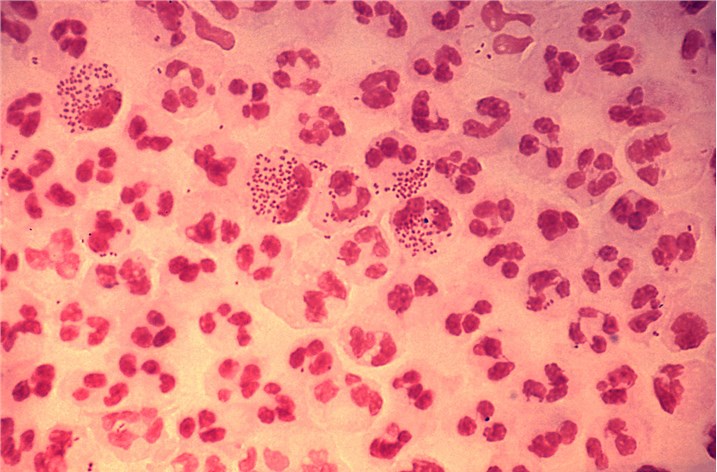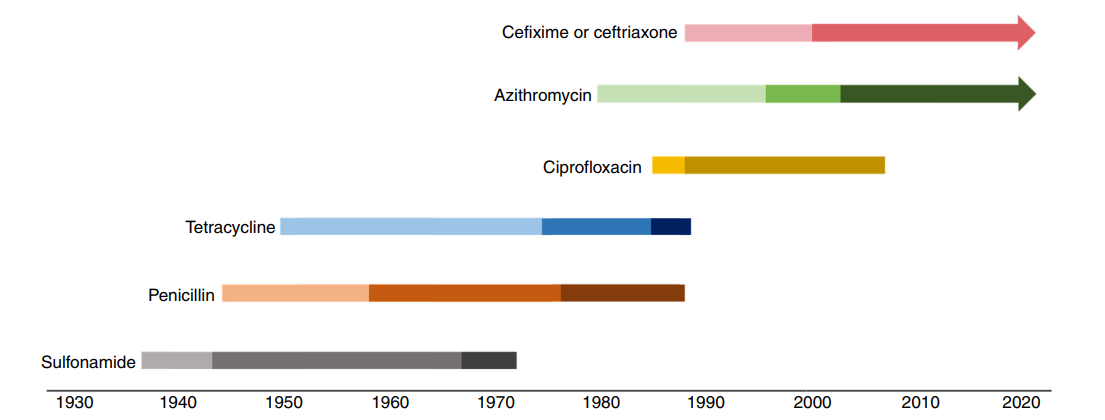Neisseria gonorrhoeae (N. gonorrhoeae) is a leading causative agent of gonorrhea, one of the most common sexually transmitted diseases. Currently, broad-spectrum antibiotics are regarded as empiric therapies for gonorrhea. However, the rise of drug-resistant N. gonorrhoeae brings a great challenge for the treatment of gonorrhea. Now, it is required to develop more effective antibacterials against N. gonorrhoeae.
Aided by rich expertise of antibacterial drug development and state-of-the-art technical platform, Creative Biolabs offers a full range of high-quality anti-N. Gonorrhoeae drug discovery services to help our clients to explore novel therapies against N. gonorrhoeae.
Introduction of N. Gonorrhoeae
N. Gonorrhoeae, a species of gram-negative diplococci bacteria, is a member of the family Neisseriaceae of the phylum Proteobacteria (β subgroup) of the Eubacteria. It grows and rapidly reproduces in the mucous surface of urogenital sites such as the cervix, fallopian tubes, urethra, rectum, and uterus, as well as in the oropharynx and nasopharynx. This organism is an etiologic agent of gonorrhea, one of the most common sexually transmitted diseases. Besides, N. Gonorrhoeae also causes other forms of gonococcal diseases such as disseminated gonococcemia, septic arthritis, and gonococcal ophthalmia neonatorum. Although clinical gonococcal infection rates have declined in the past few years due to the use of antibiotics, they have risen or remained flat in recent years due to the emergence of drug-resistant gonococci. What's more, N. gonorrhoeae has been revealed as a major cofactor in HIV-1 infection. Thus, it is required to develop effective medicines for the control of N. gonorrhoeae infection.
 Fig.1 Gram-stain of gonococcal urethritis.
Fig.1 Gram-stain of gonococcal urethritis.
The Resistance of N. Gonorrhoeae to Antibacterial Drugs
Broad-spectrum antibiotics are the standard treatment for gonorrhea. However, the treatment options are becoming limited because of the emergence of antibiotic-resistant N. Gonorrhoeae. Penicillin was introduced as an antimicrobial treatment for gonorrhea in 1943. But, in the 1970s, the emergence of penicillin-resistant gonorrhea ended the era of penicillin for gonorrhea treatment. Penicillin resistance mechanisms in gonococcus have been revealed to be associated with chromosomally mediated resistance and penicillinase-mediated resistance.
In the 1950s, tetracycline was introduced as a treatment option for penicillin-resistant gonorrhea. Similar to penicillin resistance, tetracycline-resistant strains have gradually emerged soon after medication. By the mid-1980s, tetracycline was no longer recommended for gonorrhea treatment due to the widespread resistance, and quinolones such as ciprofloxacin and ofloxacin were introduced to treat gonorrhea. But resistance to quinolones also emerged within a few decades. Subsequently, extended-spectrum antibiotics, such as azithromycin, ceftriaxone, and cefixime were gradually developed and used as current effective antimicrobials to treat gonorrhea. However, antibiotic-resistant N. Gonorrhoeae also appeared after azithromycin or ceftriaxone treatment.
In conclusion, it is imperative to develop effective antimicrobials to combat gonorrhea, especially antibiotic-resistant gonorrhea.
 Fig.2 Evolution of N. gonorrhoeae resistance to antimicrobials. (Costa-Lourenço, 2017)
Fig.2 Evolution of N. gonorrhoeae resistance to antimicrobials. (Costa-Lourenço, 2017)
Antibacterial Drug Discovery Services
As an outstanding expert in the field of antibacterial drug discovery, Creative Biolabs offers a variety of flexible and reliable solutions of antibacterial drug discovery for worldwide clients. Our service portfolio includes target identification and validation, Hit identification, Hit to lead, Lead optimization, to IND enabling. Our scientists have focused on the research of the mechanism of resistance of N. gonorrhoeae to antibacterials for several years and have unique insights for the development of anti-N. gonorrhoeae drugs. We are committed to offering a full range of anti-N. gonorrhoeae drug discovery services with high quality and low cost.
Features
-
Powerful drug development platforms
-
Professional expert team
-
A variety of flexible solutions for antibacterial drug discovery
-
One-stop services from target identification and validation to IND enabling
If you are interested in our services, please don’t hesitate to contact us for more information and a detailed quote.
Reference
-
Costa-Lourenço, A.P.R.D.; et al. Antimicrobial resistance in Neisseria gonorrhoeae: history, molecular mechanisms and epidemiological aspects of an emerging global threat. Brazilian Journal of Microbiology. 2017, 48(4):617-628.
For Research Use Only.

 Fig.1 Gram-stain of gonococcal urethritis.
Fig.1 Gram-stain of gonococcal urethritis.
 Fig.2 Evolution of N. gonorrhoeae resistance to antimicrobials. (Costa-Lourenço, 2017)
Fig.2 Evolution of N. gonorrhoeae resistance to antimicrobials. (Costa-Lourenço, 2017)